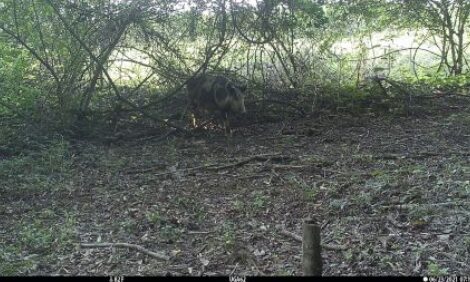



Streaming Pigs - Garth Veterinary Group.
By John Carr, Garth Veterinary Group. This article looks at one of the problems encountered in all-in/all-out programmes. What to do with the pigs which fail to keep up with the main group? Many of these pigs are recognisable at weaning as they are generally the smallest. While individual pigs can catch up, as a group smaller pigs or pigs which fall back, never grow as quickly as the main group.- Compromised pigs have extremely variable finishing weights between75-95 kg. This results in the finishing house being emptied over a long period. Ideally each finishing room should be emptied in two weeks, but the compromised pigs can extend this to 3 to 4 weeks instead, which is expensive in finishing floor area utilisation.
- At weaning compromised pigs require extreme care and help which can be difficult to provide, particularly if big pig pens are used.
- Because compromised pigs are under more stress they are more likely to succumb to disease and while they may not die (at least initially), they are likely to infect their pen mates.
Assuming there are 4 weeks of hot nursery to take the pigs from weaning at 7 kg to 18 kg - the compromised pigs will require 5 weeks to achieve 18 kg.
The streaming concept is divided into three areas.
- Weaning
At the point of weaning select the bottom 10% of the pigs and move them to separate accommodation. It is essential that these animals are not housed with the bulk of the pigs. The ideal is to keep them away from the main group, which are moved into the traditional hot nursery (first stage flat deck).
The compromised pigs can now receive additional help and care including, where necessary, antibiotics and water medication. They can also be porridge fed 8 x daily, perhaps for 6-8 days. Note it is important to mimic 'mum' immediately after weaning to stimulate and teach these pigs to eat and drink. Prior to weaning they are eating and drinking 10-20 times a day, post weaning humans only feed them once or twice a day, modern post-weaning management is hardly copying nature.
Studies on several farms have identified the healthy group are unlikely to require medication and only need to receive the most expensive creeps for 3 days.
- One week post weaning
Identify the weakest 5% of the healthy group. If necessary these can be moved to join their compromised peers from a week earlier. This allows any fading pigs to be catered for and receive appropriate treatment. If there are no animals fading then there is no need to disturb the group.
The streaming system allows for better utilisation of stockpeople and resources. The main group receives the normal 3 days intensive care post weaning, the compromised pigs can receive 7 days intensive care which is an obvious reason for their improved survival.
- The healthy 85-90% pigs at 18 kg
- The 10% - 15%compromised pigs at 18 kg
- They mix into a healthy group of 18-20 kg pigs which are naturally one week younger. This obviously breaks the all-in/all-out rules, but mixing two groups of 18 kg animals which are more mature, in particular with regard to their immune system, is safer than mixing animals at any time after day 10 when maternal antibodies start to wane.
- They remain separated from the main group and are farmed separately, either to sale weight or bacon weight. While this is the best option and maintains all-in/all-out, this option is very difficult or impractical in small farms working with small numbers of compromised pigs. However, on large units especially outdoor this is a practical option. Note these pigs all come from the same farm and have the same 'health' status.

Advantages experienced so far :
- Quicker emptying of the finishing house - variation at finishing of only 85-95 kg instead of 75-95 kg. Better floor space utilisation.
- No problems at 18-20 kg with mixing pigs.
- Reduction of antibiotic usage - up to 70% on three farms, in particular injectable and in-feed medication.
- Decreased post weaning fading weaners.
- More prompt treatment of compromised weaners.
- Reduction in post weaning mortality although some of this has to be balanced with the destroying of sick pigs.
- Better use of stockperson time and resources.
As with any idea, once tried successful adaptations are made. The one which has worked well is to identify the 10% compromised at week 3 of lactation i.e. when they are 16-21 days old and on weaning day move them onto a suitable newly weaned sow i.e. good mother, with long narrow teats, possibly a gilt (to enhance her reproduction) therefore leaving 9 piglets on the original sow.
The moved 10% are placed on their new mother(s) and left for at least 2 weeks. Therefore, they are actually weaned at 5 weeks. They are then moved into the compromised weaner accommodation and mixed with the main group again at 18 kg. Note: to ensure service targets are met for the first 2 weeks, extra gilts are needed to accommodate the nurse sows.
After 2 weeks the nurse sows return to the breeding pool.

Summary
- The streaming system is a means of better caring for the poor pigs at weaning time and allows for their successful integration back into the main group, albeit into a group a week younger.
- The removal of the weakest pigs from a large group allows that group to progress with less problems and can have the effect of reducing medication requirements quite considerably.
- The isolation of compromised pigs results in more efficient use of a stockpersons time and focuses attention on those pigs who need it most.






